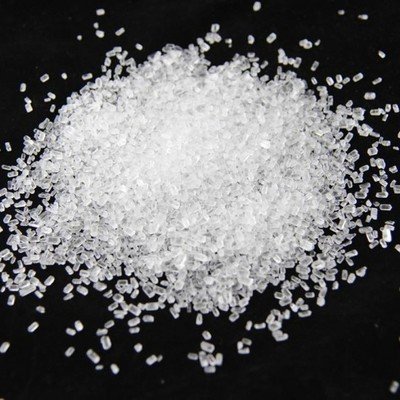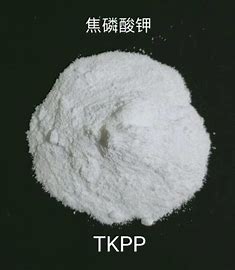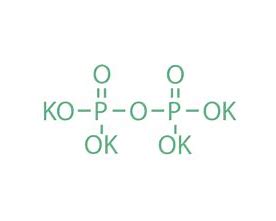Magnesium sulfate heptahydrate(MgSO4·7H2O)MSDS
I. Chemical Identification
1.1 GHS Product Name
Magnesium sulfate heptahydrate
1.2 Other Identification Information
Alternative Names: Magnesium sulfate; Epsom salt
1.3 Recommended Use and Restrictions
Recommended Use: Industrial applications and scientific research
Restrictions: No data available
1.4 Supplier Information
Company Name: Chongqing Yuhan Technolog
II. Hazard Overview
2.1 Hazard Classification
Not classified
2.2 GHS Label Elements
- Pictogram: None
- Signal Word: None
- Hazard Statements: None
- Precautionary Statements: None
2.3 Other Potential Hazards
No data available
III. Composition Information
3.1 Substance Composition
| Chemical Name | Synonyms | CAS Number | EC Number | Concentration |
|---|---|---|---|---|
| Magnesium sulfate heptahydrate | Magnesium sulfate heptahydrate | 10034-99-8 | 600-073-4 | 100% |
IV. First Aid Measures
4.1 Emergency Treatment Methods
- Inhalation: Move to an area with fresh air; if having difficulty breathing, provide oxygen; in case of stopped breathing, give artificial respiration (avoid mouth-to-mouth resuscitation if the chemical has been inhaled or swallowed), and seek medical help immediately.
- Skin Contact: Remove contaminated clothing immediately and wash with soap and plenty of water, then seek medical advice.
- Eye Contact: Rinse with clean water for at least 15 minutes and seek medical attention.
- Ingestion: Rinse the mouth with water, do not induce vomiting; do not feed an unconscious person, and contact a doctor or poison control center immediately.
V. Fire-fighting Measures
5.1 Suitable Extinguishing Agents
Dry chemical, carbon dioxide, or alcohol-resistant foam
5.2 Special Hazards of the Chemical
No data available
5.3 Protective Measures for Firefighters
Wear a self-contained breathing apparatus for firefighting if necessary
VI. Emergency Response to Leakage
6.1 Personal Protection and Emergency Procedures
- Avoid the formation of dust, and prevent the inhalation of mist, gas, or vapor.
- Wear personal protective equipment (such as chemical-resistant gloves and protective clothing).
- Ensure good ventilation, remove all sources of ignition, evacuate people to a safe area, and stay upwind.
6.2 Environmental Protection Measures
If it is safe to do so, prevent further leakage; avoid the chemical from entering the sewer system and discharging into the environment.
6.3 Disposal Methods for Leakage
Collect and dispose of the leakage properly; use explosion-proof tools and store the leaked substance in a sealed container, and handle the residual substance in accordance with relevant regulations.
VII. Handling and Storage
7.1 Safe Handling Precautions
- Operate in a well-ventilated area and wear protective clothing.
- Avoid contact with skin and eyes, and prevent the generation of dust and aerosols.
- Use explosion-proof tools and prevent electrostatic fires.
7.2 Storage Conditions
- Store in a dry, cool, and well-ventilated place and keep the container sealed.
- Keep away from food containers and incompatible substances.
VIII. Exposure Control and Personal Protection
8.1 Exposure Limits
- Occupational Exposure Limits: No data available
- Biological Limits: No data available
8.2 Engineering Control Measures
Ensure sufficient ventilation, follow industrial hygiene and safety practices, and set up emergency exits and risk elimination areas.
8.3 Personal Protective Equipment
- Eye/Face Protection: Wear goggles that meet the standards of EN 166 (EU) or NIOSH (US).
- Skin Protection: Wear fireproof and permeation-resistant work clothes and protective gloves (check the integrity of the gloves before use).
- Respiratory Protection: If the exposure limit is exceeded or there are irritation symptoms, wear a full-face respirator.
IX. Physical and Chemical Properties
| Item | Data |
|---|---|
| Physical State | Not provided |
| Color | Not provided |
| Odor | Not provided |
| Melting Point | 1124°C |
| Boiling Point | 330°C (760 mmHg) |
| Flammability | Not provided |
| Explosion Limits | Not provided |
| Flash Point | Not provided |
| Auto-ignition Temperature | Not provided |
| pH Value | Not provided |
| Solubility | Not provided |
| Vapor Pressure | 3.35E-05mmHg (25°C) |
| Density/Relative Density | 2.66 |
| Relative Vapor Density | <0.01 (air = 1) |
X. Stability and Reactivity

10.1 Reactivity
No data available
10.2 Chemical Stability
No data available
10.3 Possibility of Hazardous Reactions
No data available
10.4 Conditions to Avoid
No data available
10.5 Incompatible Substances
No data available
10.6 Decomposition Products
No data available
XI. Toxicological Information
- Acute Toxicity: Data on oral, inhalation, and skin contact are all absent.
- Skin/Eye Irritation: No data available.
- Sensitization/Mutagenicity/Carcinogenicity: No data available.
- Long-term Exposure Risks: No data available.
XII. Ecological Information
- Toxicity to Aquatic Organisms: Data on toxicity to fish, daphnia, algae, and microorganisms are all absent.
- Environmental Persistence: No data available.
- Bioaccumulation: No data available.
- Mobility in Soil: No data available.
XIII. Disposal Considerations
13.1 Product Disposal
Send to a qualified chemical destruction agency, or dispose of it through controlled incineration (equipped with a flue gas purification device); strictly prohibit contamination of water sources, food, or soil, and do not discharge into the sewer system.
13.2 Disposal of Contaminated Packaging
Rinse the container three times and recycle or refurbish it; if recycling is not possible, puncture the packaging and dispose of it in a landfill; combustible packaging can be disposed of through controlled incineration.

XIV. Transport Information
- UN Number: Not a dangerous good.
- Transport Name: Not a dangerous good.
- Hazard Class: None
- Packaging Group: None
- Environmental Hazard: None
XV. Regulatory Information
| Regulatory System | Inclusion Status |
|---|---|
| European Inventory of Existing Commercial Chemical Substances (EINECS) | Not listed |
| EU Chemical Inventory (EC Inventory) | Not listed |
| US Toxic Substances Control Act (TSCA) Inventory | Not listed |
| China Catalog of Hazardous Chemicals 2015 | Not listed |
| New Zealand Inventory of Chemicals (NZIoC) | Listed |
| Philippines Inventory of Chemicals and Chemical Substances (PICCS) | Listed |
| Vietnam National Chemical Inventory | Listed |
| Chinese Inventory of Existing Chemical Substances (China IECSC) | Listed |
| Korea Existing Chemicals List (KECL) | Not listed |
XVI. Other Information
Revision Record
Creation Date: July 15, 2019
Revision Date: July 15, 2019
Abbreviations
CAS: Chemical Abstracts Service
ADR: European Agreement concerning the International Carriage of Dangerous Goods by Road
RID: Regulation concerning the International Carriage of Dangerous Goods by Rail
IMDG: International Maritime Dangerous Goods
IATA: International Air Transport Association
TWA: Time Weighted Average
STEL: Short-term Exposure Limit
LC50: Lethal Concentration 50%
LD50: Lethal Dose 50%
EC50: Effective Concentration 50%
References
- IPCS – The International Chemical Safety Cards (ICSC), website: http://www.ilo.org/dyn/icsc/showcard.home
- HSDB – Hazardous Substances Data Bank, website: https://toxnet.nlm.nih.gov/newtoxnet/hsdb.htm
- IARC – International Agency for Research on Cancer, website: http://www.iarc.fr/
- eChemPortal – The Global Portal to Information on Chemical Substances by OECD, website: http://www.echemportal.org/echemportal/index?pageID=0&request_locale=en
- CAMEO Chemicals, website: http://cameochemicals.noaa.gov/search/simple
- ChemIDplus, website: http://chem.sis.nlm.nih.gov/chemidplus/chemidlite.jsp
- ERG – Emergency Response Guidebook by U.S. Department of Transportation, website: http://www.phmsa.dot.gov/hazmat/library/erg
- Germany GESTIS-database on hazard substance, website: http://www.dguv.de/ifa/gestis/gestis-stoffdatenbank/index-2.jsp
- ECHA – European Chemicals Agency, website: https://echa.europa.eu/






